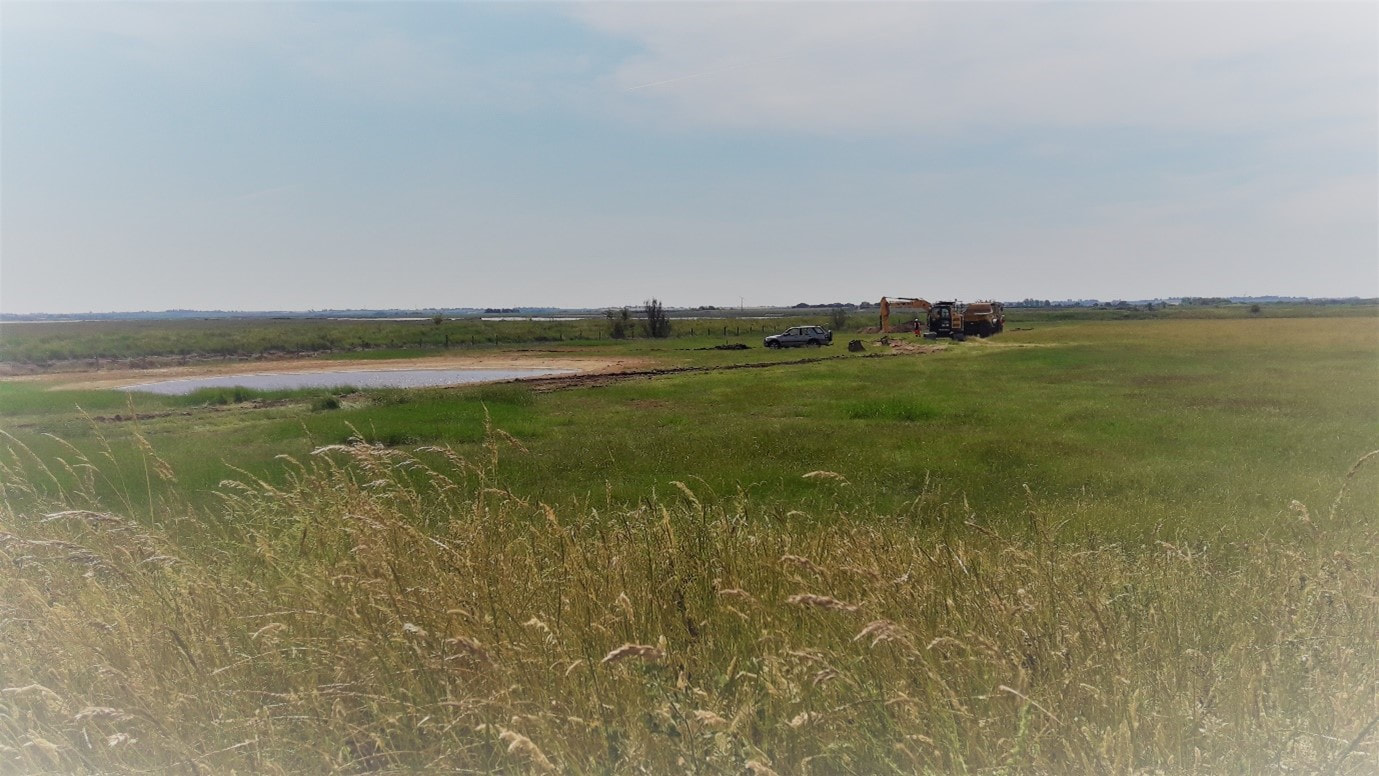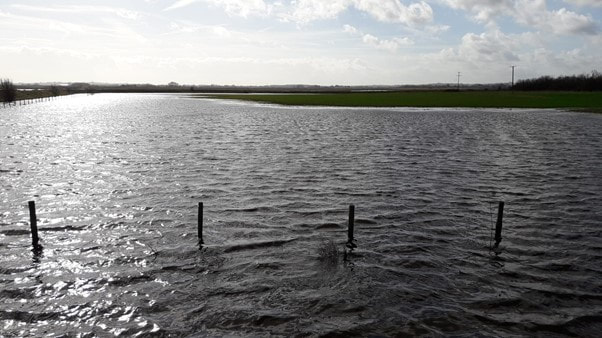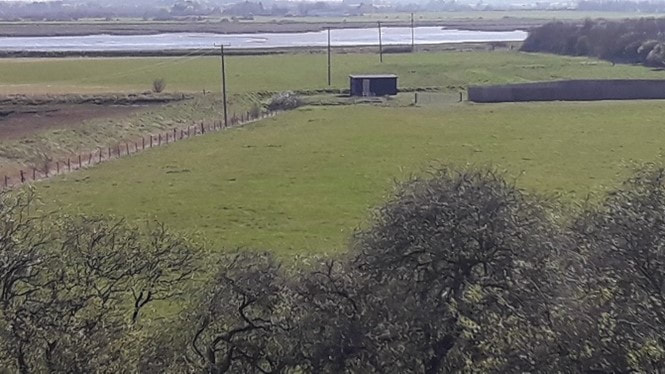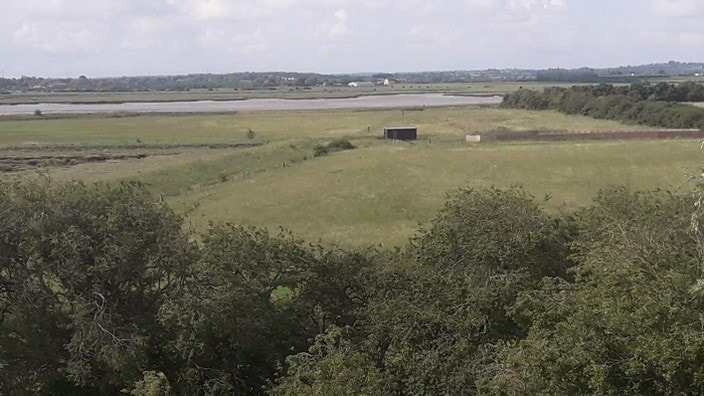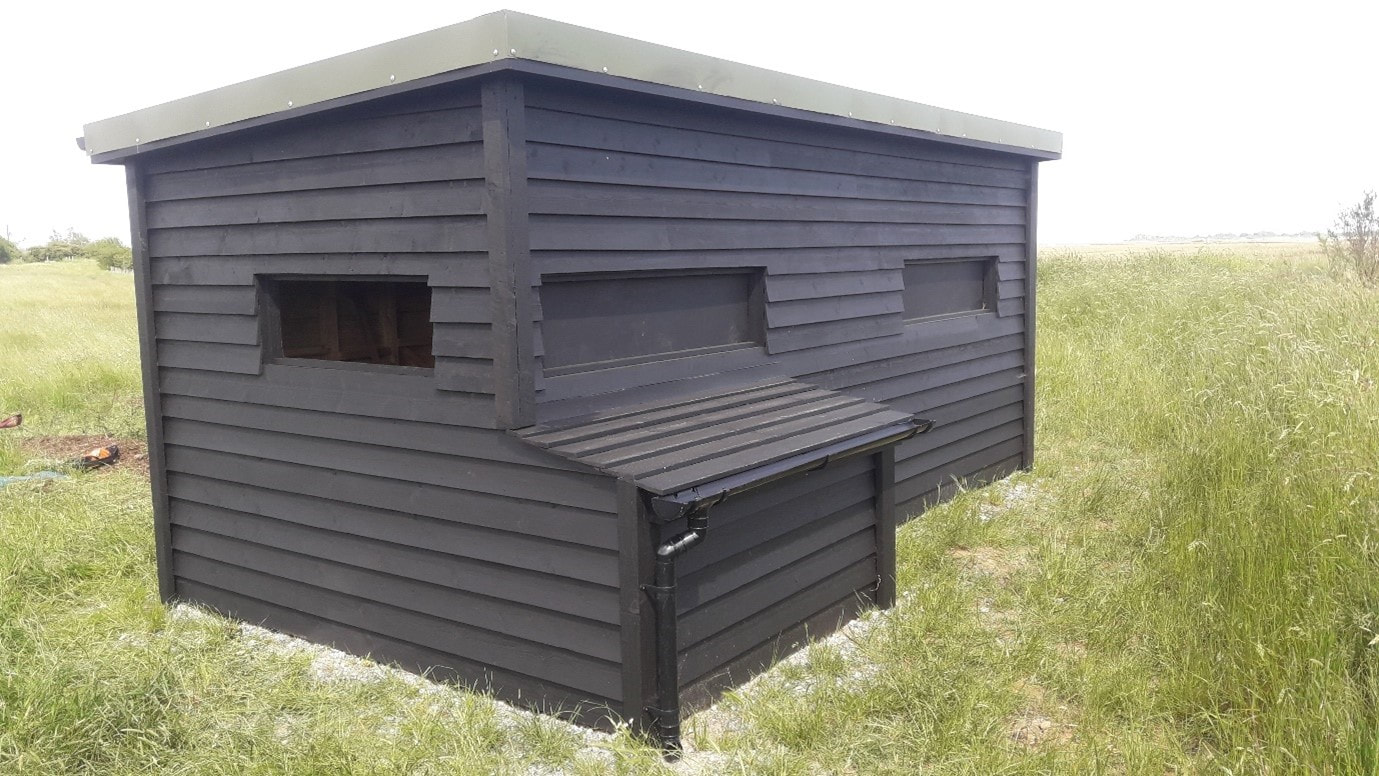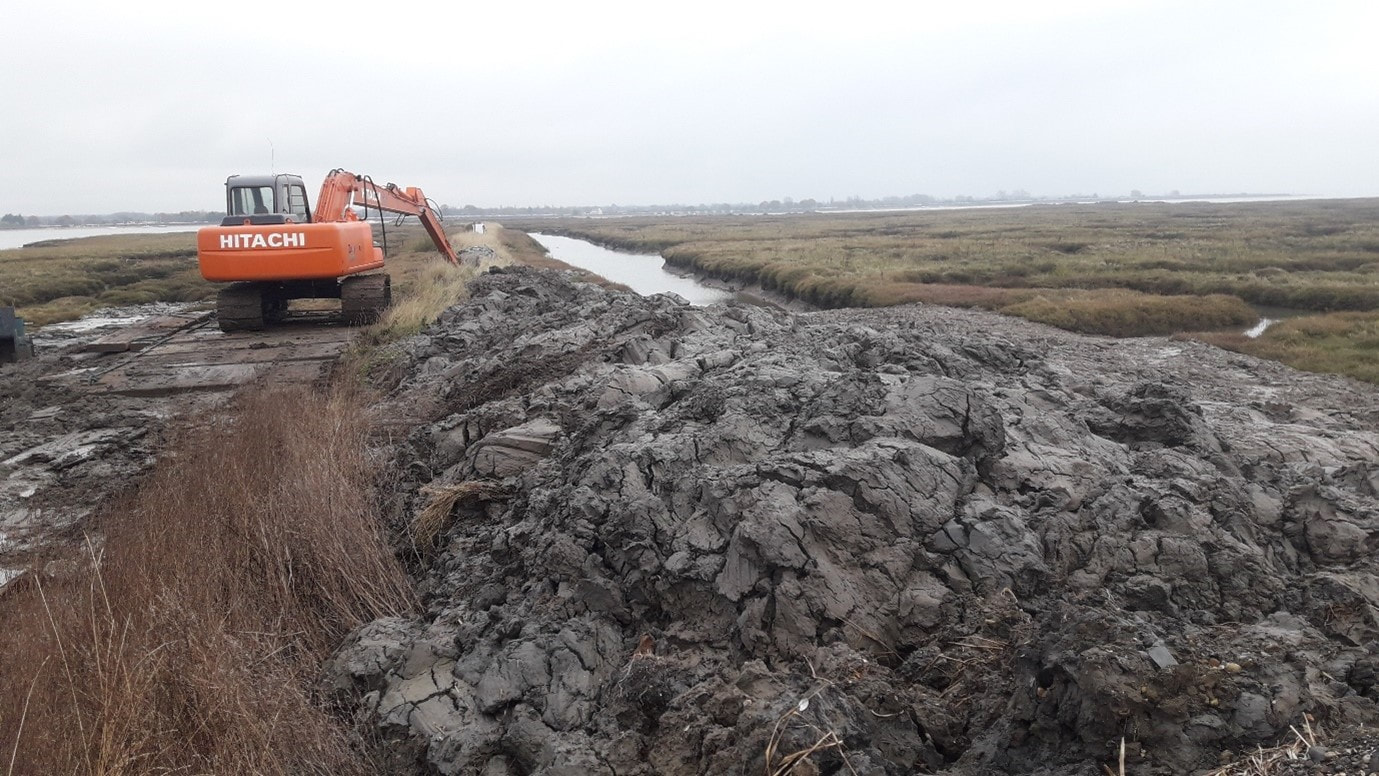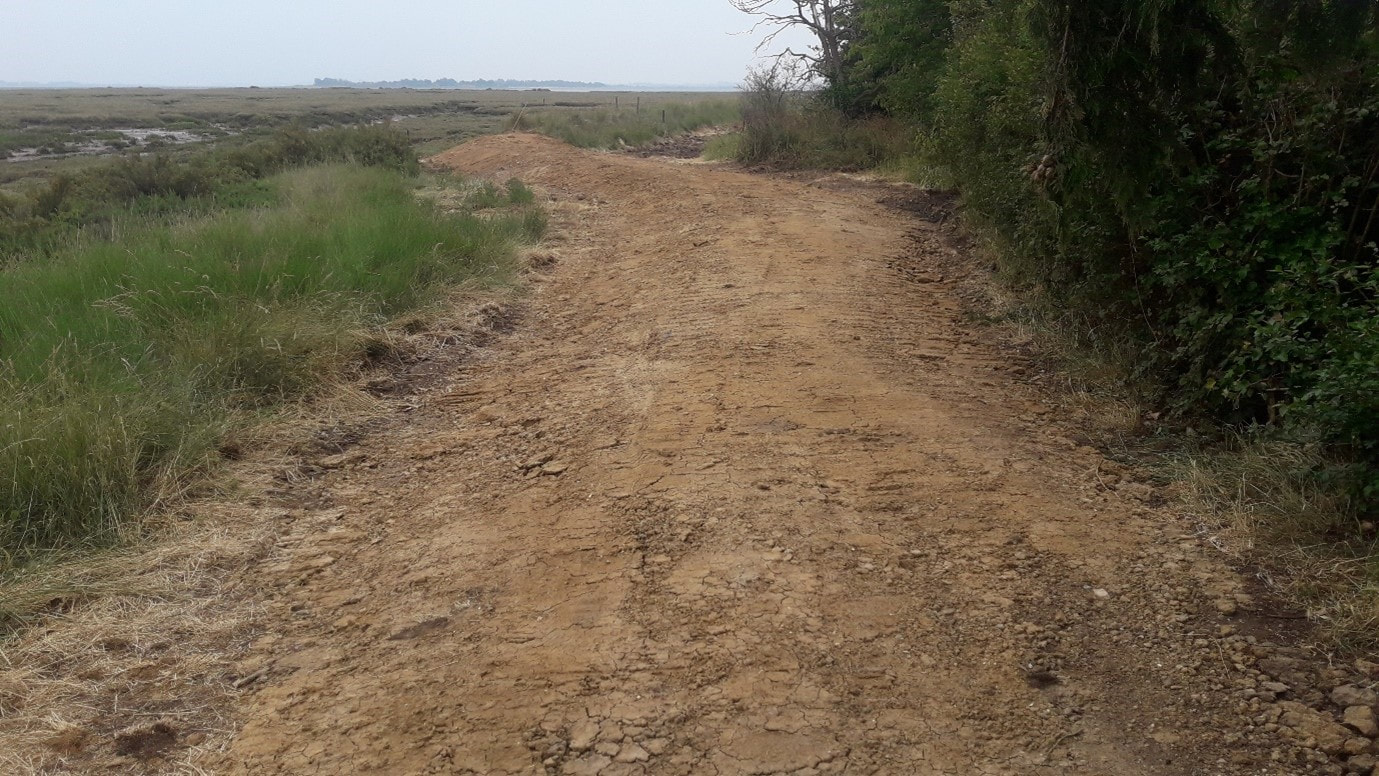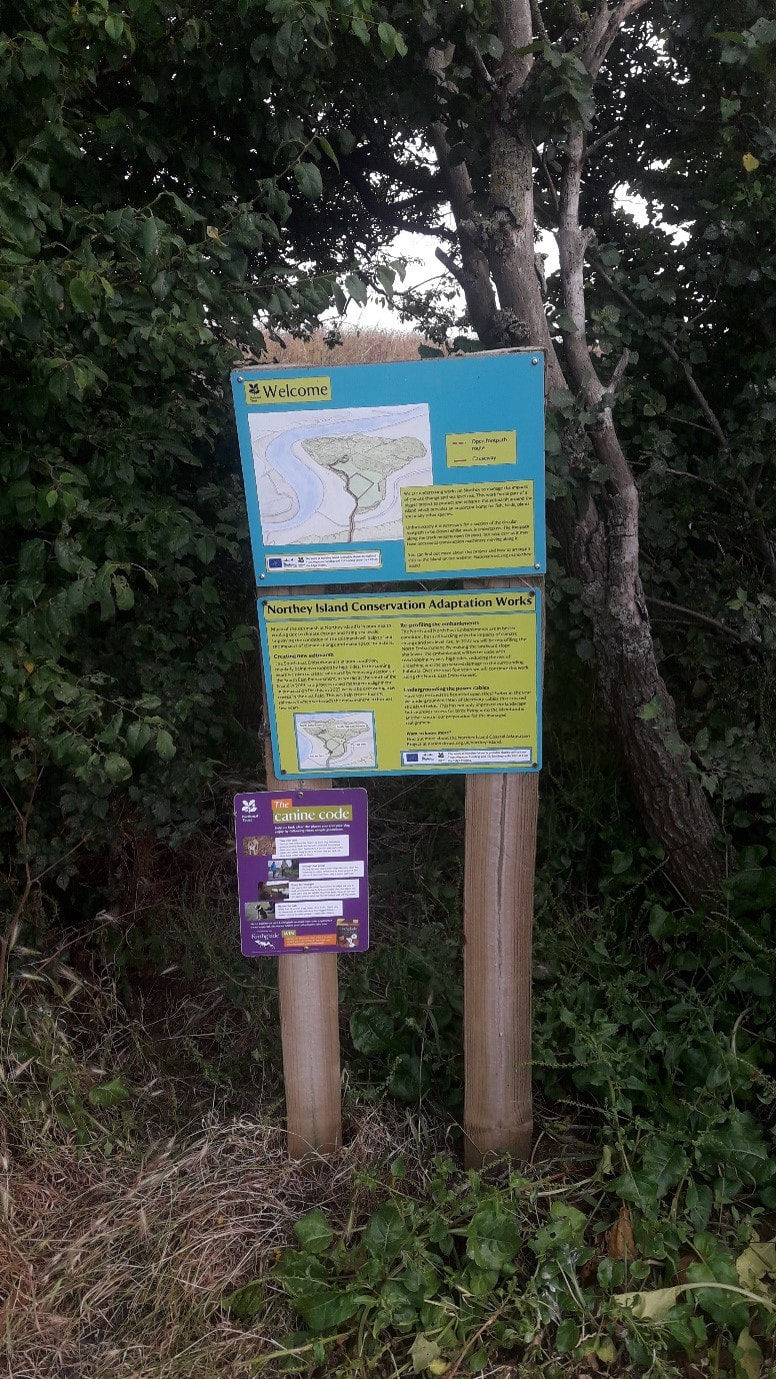|
Blog by David Mason, National Trust Suffolk and Essex Coast Ranger for Northey Island Much of the saltmarsh at Northey Island is in poor health, eroding due to climate change and rising sea levels. Improving the condition of the saltmarsh will help to limit the impacts of climate change and make space for nature to thrive. Creating new saltmarsh The South East Embankment is in poor condition, regularly being overtopped by high tides. In the coming years we plan to create new saltmarsh by removing sections of this embankment, as we did at the south of the island in 2019, in a process called managed realignment. In preparation for this, in 2022 we are excavating new creeks in the East Field. This will help create healthy saltmarsh when we breach the embankment in the next few years by bringing silt and seed into the former field and allowing it to deposit and build up along the banks. On the face of it creating saltmarsh might appear simple. Remove the sea walls to let in the tide and allow the tide and natural processes to deposit silt and seeds to grow new habitat. This however is only the visible part of it. Species and habitat monitoring and satisfying the regulatory bodies; translocation of protected species and creation of compensatory habitat; gaining funding from internal and external national and international funding bodies and reporting to them; analysis of the expected natural processes, careful design of the new infrastructure and navigating the marine regulatory process; moving existing infrastructure; ongoing monitoring to measure the effects of the changes; managing contractors, staff and volunteers; and explaining it all to members of the public and colleagues: all these factors and more go into Saltmarsh protection and re-creation. This video gives an overview of the site and project aims. In February a surge tide came over the South East Embankment and flooded part of the island. This demonstrates why we need to consider how we manage Northey Island in the face of sea level rise and climate change. The overtopping of the embankments is not uncommon, happening at least annually and the frequency will increase into the future. The area of water gives a rough idea of where the tide will come to when the embankment is realigned. As sea levels rise further the new saltmarsh will progress even further onto the land. The water has now receded but is a reminder of why we continue to do our work at Northey Island. Removing overhead powerlines. Since the last blog there have been a few changes on site. Perhaps the biggest is the removal of the power lines that crossed the fields and the burying of new cables to the houses. Some of these power poles were in areas that will become saltmarsh. This has made a great difference to the landscape and will allow more safe access for birds flying into the fields, including the Brent Geese that come in during the winter to roost and feed. We have left some poles in place, cut down in height, and plan to install nesting boxes to the tops of the poles in the hope of enticing oystercatchers and other estuary birds to breed here. Volunteers As small cogs in that project machine at Northey Island, the volunteers and I have been supporting this work. The Essex and Suffolk National Trust Volunteers helped to paint the new hide which looks out over this area. They also weeded and mulched new hedging, watered new plants around the pond in the dry weather in early spring and cleared up a large amount of litter from the foreshore, including the flotsam and jetsam brought onto the island by the surge tide. They have also helped to prepare the ground for a new footpath through the fields to the hide. Wildlife Marsh harriers are regularly seen over the saltmarsh and a variety of birds have been using the area around the new scrape near the hide including yellow wagtail, shelduck, snipe, little egret, curlew, lapwing, teal, mallard, and shoveler. Cuckoos and whitethroat can be heard through the summer and Brent geese roost on the grass fields during the winter. Hopefully there will be plenty to see, looking over the developing saltmarsh, when the hide is open to the public. The hedges and grassland are alive with butterflies and walking along the access road in June and July surrounded by clouds of Meadow Browns feeding on the privet is mesmerising. A new freshwater pond has been created near the hide which will provide a more stable and favourable home for the water voles that currently reside in an unsustainable area. Once new pond side vegetation is fully established the plan is to translocate the voles to their new home. Diving beetles, water boatmen, pond skaters and dragonflies are already colonising these areas. Improved resilience to change Further locally dredged sediment has also been placed in the north-west of the island to raise up the saltmarsh. This will protect saltmarsh in this area, avoiding new channels being formed and reducing higher water flows over the saltmarsh which cause erosion and vegetation loss. This work has allowed further sediment to be deposited in the saltmarsh by the tides, building up the marsh and allowing saltmarsh plants to regenerate. This is improving diversity and creating rare upper saltmarsh where the marsh transitions into the terrestrial land. A section of bank has been reinstated at the north of the Island which has a shallower profile that will be better able to cope with overtopping by high tides, allowing water to run off without damaging the bank. This will help to protect the north of the island as sea levels rise. Topsoil will be spread to allow it to revegetate quickly. Public engagement. While patrolling the site and talking to visitors, answering email enquiries, and even commissioning the signs from the printer, explaining the aims and progress of the project to visitors and the local community is an important part of my role. The project featured in the National Trust member’s magazine reaching more than 5 million members. The Northey Island website has also been updated with project developments. https://www.nationaltrust.org.uk/northey-island
0 Comments
Leave a Reply. |
Archives
April 2024
Categories
All
Photo credits: Oystercatcher by Katie Nethercoat (rspb-images.com)
LOTE Logo credits: Saskia Wischnewski |

